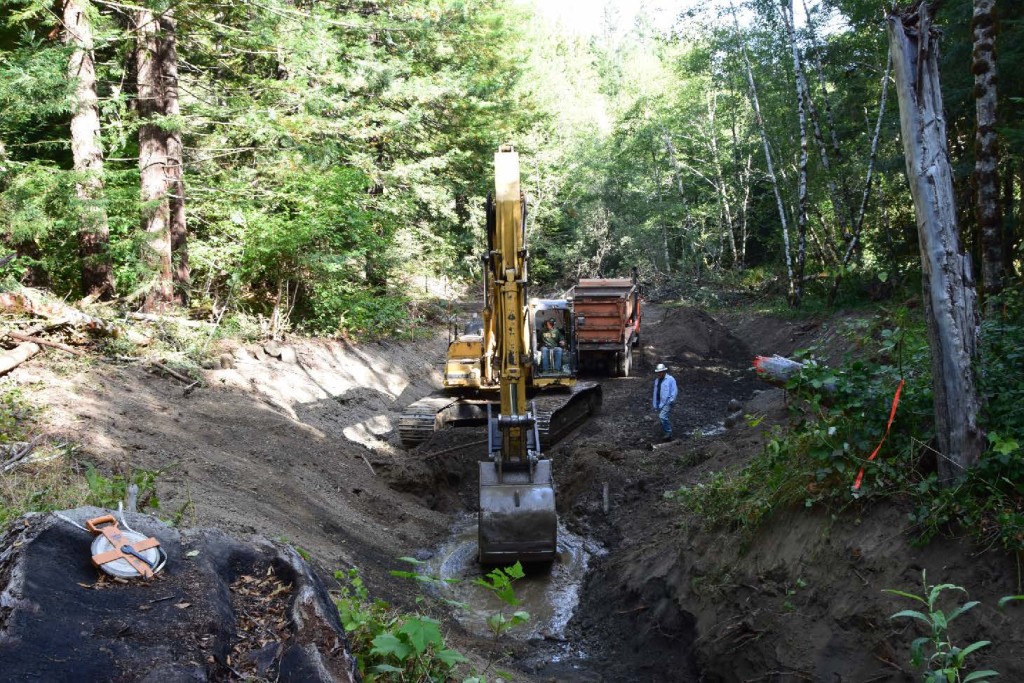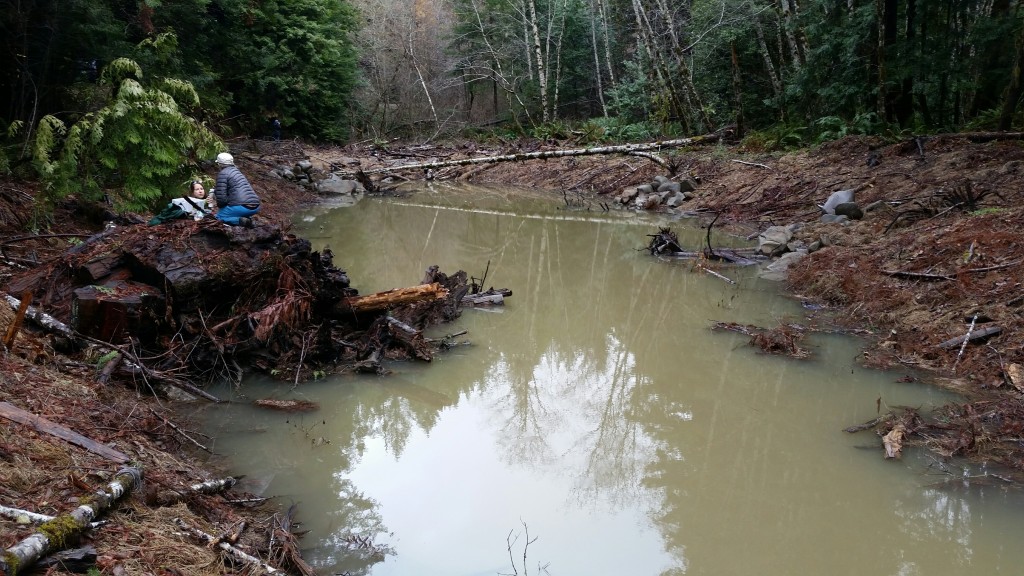
Lawrence Creek- A New Habitat Restoration Approach on the West Coast
January 19th 2016
Original link: here
Written by: NOAA
Posted: 1/19/2016
Restoring stream habitat for salmon often takes years of planning, can require a complicated permitting process, and includes some careful engineering. In an area identified as a high priority for salmon recovery in Northern California, a small team of biologists created new habitat off the main stream channel of Lawrence Creek referred to as “off-channel” habitat, for ten percent of the cost and within a shorter amount of time than similar projects.
The location of this project, as well as the unique partnership between NOAA Fisheries and the Humboldt Redwood Company (HRC), allowed for a quick project design and streamlined permitting process—saving time and money.


Construction of Lawrence Creek off channel habitat pond. Photo: Leah Mahan, NOAA
“What was unique about this partnership is that HRC, the landowner, donated their time and other materials to create this new salmon habitat. The fact that the project was located far from any residential or city infrastructure also meant that the design didn’t need to go through as many approvals as you would normally need. This resulted in a lower overall project cost and a shorter permitting process,” says Matt Goldsworthy, one of NOAA Fisheries biologists who spearheaded this project.
A small competitive internal grant from NOAA Fisheries provided the seed funding for the project construction. The project design was completed by a NOAA Fisheries engineer/hydrologist. Then HRC donated 30 hours of staff time and woody debris to create the off-channel habitat. “These logs alone can cost more than this entire project did,” said Goldsworthy.
HRC has been a partner with NOAA Fisheries on other restoration in the past. This project was located on HRC property, and in a creek that is known to have a viable population of salmon, so HRC was particularly invested. The off-channel habitat that was created is a vital part of a salmon’s life cycle providing them with a place to rest, feed, and grow bigger— increasing their chances of surviving in the ocean. The development of off-channel habitat is specifically identified as a high priority recovery action in NOAA Fisheries’ Southern Oregon Northern California Coast Coho Salmon Recovery Plan.

Biologists found juvenile salmon and steelhead using the new habitat, filled with the first rainwaters of winter. Photo: Leah Mahan, NOAA
“We really like this project because it restores habitat in Lawrence Creek, which is one of the only creeks in this area that still supports large numbers of all three salmon species,” claimed Shane Beach, a geologist for HRC. Both the Eel and Van Duzen rivers which are the main rivers that Lawrence Creek flows into have problems with introduced pike minnows that eat juvenile salmon. Numbers of salmon in these rivers have remained low because of minnow predation. However, fish surveys conducted in Lawrence creek suggest that this area is inaccessible to pike minnow, also increasing the potential benefit of the restoration.
So what is next for this super restoration team? Leah Mahan, one of the NOAA Fisheries restoration biologists on the team explained, “We plan to replicate this project in other high priority watersheds for restoration in northern California and possibly look into opportunities south too. This type of project works well in undeveloped areas far from residences and other infrastructure.” Biologists from this team have been back to monitor the restored area and they are already finding juvenile salmon using the new habitat.
LEARN more about the Southern Oregon Northern California Coast Coho Salmon Recovery Plan
Homepage photo shows juvenile coho salmon and steelhead trout found during a monitoring survey of the pond after restoration. Photo: Leah Mahan, NOAA